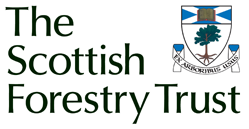Modelling the effects of forest management on the wood properties and branch characteristics of UK-grown Scots pine
Carried out by: Aberdeen University; Forest Research
Summary Description:
Changes in silvicultural practices in recent decades—wider initial spacings, a preference for artificial regeneration, and an increased use of mechanised thinnings, have led to concerns about the suitability of Scots pine timber for use in structural applications due to potentially poorer stem form, a greater proportion of juvenile wood and larger, more numerous knots.
As part of the research presented in the paper, novel predictive equations were developed for the key physical, mechanical and branching properties that determine structural timber quality in Scots pine, namely: microfibril angle, wood density, clearwood bending strength and stiffness, and branch number, size, insertion angle and status (alive or dead).
Timescale: 2007-2010
SFT Funds Awarded: £61,890
Project Outcomes:
Simulations were carried out using these equations to examine the effects of different silvicultural regimes on each wood and branch property of interest. Based on these simulations, it is recommended that in order to produce high quality Scots pine timber trees are planted at narrower initial spacings and grown on longer rotations than currently prescribed, and, where appropriate, thinnings should be delayed. Together, these measures will restrict final branch size and the amount of mechanically inferior juvenile wood in the final crop.
Dave Auty, the student who carried out the research at Aberdeen University is now studying at Laval University in Quebec.
Dave won the Scottish Woodlands Student Excellence Award in 2010
